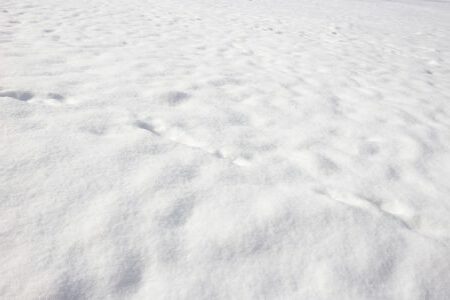Snowy weather and extreme cold present a unique set of survival challenges. While staying hydrated may not be the first thing that comes to mind while trekking through the snow, it is something to be concerned about if you are out in the cold for long periods or are waiting for rescue in a survival situation.
But what about all that fluffy white stuff? Can’t you crunch on a handle of snow if you get thirsty?
In total, eating snow for emergency hydration should be avoided. Eating snow increases the risk of hypothermia and doesn’t provide enough hydration or nutrients to the body to help an individual survive in the cold.
Eating a handful of snow may be one of your favorite winter childhood experiences, but it’s not the best idea if you are in a survival situation. So, what do you do instead? We’ve got you covered. Below we’ll tell you exactly why you shouldn’t eat the snow and what might help you in a survival situation.
Can You Eat Snow in a Survival Situation?
Eating snow might make sense on the surface, but once we break it down, you’ll see that it can cause you harm if you find yourself stranded in the cold.
Eating snow in an emergency increases the individual’s risk of hypothermia and can potentially cause further dehydration. Snow that has been sitting also runs the risk of carrying harmful bacteria left by animals that could make a person sick.
The only point at which you should eat snow for survival is if you are at serious risk of dehydration. Even in this case, it’s best to find a way to melt the snow before consuming it.
You Need to Maintain Core Body Temperature
In an actual survival situation in freezing temperatures, your priority should be maintaining your core body temperature until you are rescued. The typical list of survival necessities includes finding shelter, starting a fire, and hydration. However, eating now can cause you to lose body temperature and put you at risk for hypothermia.

Can Eating Snow Cause Dehydration?
While snow doesn’t directly cause dehydration, eating it will lower your core body temperature and can cause your body to expend more energy to stay warm. Since snow is technically solid, your body needs to produce enough heat to melt and distribute it. This process, in turn, can negate any benefits from consumption.
Dangers of Winter Dehydration
While many people associate dehydration with the warmer months of the year, it isn’t just limited to hot weather. You can still get dehydrated in the winter, which may even be more dangerous since the effects aren’t as evident in the cold.
Dehydration leaves your body without the proper water to function correctly and can significantly lower your survival rate. In the summer, it may be easier to notice the effects of dehydration. However, in the winter, dehydration can happen faster than usual because sweat evaporates more rapidly due to rapid water loss.
When it’s cold, your body still loses moisture. However, because you can’t see the sweat, you might not even realize it. Your body loses moisture almost every day, whether it’s cold or hot outside. This can be from breathing, sweating, urinating, or other bodily functions. The rate at which you’re losing water changes based on temperature. It also varies based on factors like activity level, what you eat, and your health.
How to Utilize Snow in a Survival Situation
If you’re stuck out in the cold, snow may not bring value to you as a snack, but it can be utilized in other ways. After all, when you’re out in the wilderness, you need to use what is available to you, and in many cold-weather places, snow is abundant. Keep these tips in mind to increase your chances of survival if you get stuck in the snow.
Is it Safe to Boil Snow and Drink it?
One way to use the snow as hydration is to boil it down. Not only does this turn it into a liquid that your body can use to hydrate you, but it also kills any potentially harmful bacteria that may have settled in the snow.
How Much Snow Do You Need for Hydration?
The amount of water you need to survive varies from person to person. Most people need around 1-3 liters of water daily, but that figure tends to fluctuate depending on several factors. The amount each needs depends on their size, metabolic rate, and hold cold it is.
It’s also important to note how much water there is within the snow.
As a general rule of thumb, the snow ratio, or percentage of water to snow, is approximately 12:1. Which means for every 12 inches of snow. There would be 1 inch of water.
For 3 liters of water, you would need to collect and boil 36 liters of snow.
Use Snow for Insulation
With hypothermia being one of the biggest threats when lost in the cold, it’s essential to ensure you find ways to stay warm, and fresh snow may help.
Remember the 12:1 snow ratio we talked about earlier? All the extra air in snow creates little pockets of insulation that can help keep you warm.
Just like animals will bury themselves in the snow, you can create your snow bed for warmth or stuff your pockets with fresh snow to create extra insulation.
Conclusion
Hopefully, this gives you a better idea of how to survive in the snow. While eating snow in a survival situation may seem like a good idea, this should only be done in a dire emergency. Even then, you’re taking a more significant risk by lowing your core body temperature and increasing your chances of hypothermia.
Remember, boiled snow is the safest. If you can start a fire, your best option is to melt it down into the water and try your best to stay warm.

